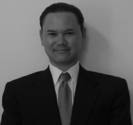A boat sails out to sea, reaches the horizon, and never returns. Our minds become crowded with assumptions. The “truth” boils down to a few perfectly clear observations: this boat reached the horizon, an obvious straight line, fell out of sight and never returned. Beset with loss and fear, the seaside fishing village begins to draw the “only” logical conclusion: the boat fell off the edge of the world.
This conclusion, widely held for centuries, produced limiting effects: people fished only within sight of the shore. This made perfect sense. It mitigated danger and reduced loss. Soon, people forgot the original incident, as the belief in a flat world became habit. You might call this an inflexible conclusion, but if you were living in a time of history without GPS, telescopes or jet-planes, might you draw the same conclusion?
Inflexible Processes Result in Reduced Innovation
The world in which we live is in constant flux. Nothing stays the same for very long. Ben Franklin once defined insanity as, “doing the same thing over and over again but expecting a different result.” Understanding inflexibility is a key to preparing people for spontaneous learning, innovation and empowerment. The same processes that resulted in a flat world for whole societies affect smaller teams, businesses and individuals today.
We are the masters of our own destiny, yet actively choosing our own paths can sometimes be intimidating. People have the ability to create positive change in their lives and in their businesses, yet distorted fear-based perceptions can often lead to wrong conclusions (a flat world) and ultimate stagnation (fishing close to shore).
FEAR is False Evidence Appearing Real.
The first step to turn fear into power is to accept full responsibility for our choices, behavior, and the reality of what we now have in our life. The second step is to have the courage to acknowledge and examine our fears. One of the greatest fears we have to deal with is the fear of change. This creates a resistance to learning. When we are able to deal with the fear of change we are able to continuously learn, reinvent, renew and live life with passion. This produces innovation when applied to the disciplines of marketing and management.
Fear of Learning Limits Growth
If individuals feel they’ve worked hard and have earned their success, this same belief may result in “safe” thinking and impede spontaneous learning. The new era requires leaders who are nonstop learners and will eagerly share what they learn. It requires leaders who learn, early and often, how to create standards and systems that produce competitive advantage and innovation.
Making a Change
I think we can all decide to become more open to change. We can become better learners. It takes courage and faith to view the world as round when every bit of evidence we come in contact with reinforces our image of a “flat world.” It requires a willingness to take risks. Here are some actions I plan on taking and ways that I will integrate learning into my daily activities:
- Learn one new thing every day. Even it is something a competitor is doing, how can I make it work for me and my organization?
- Be willing to invest more time in learning about what I am “already good at doing.” Think of Tiger Woods or Shaquille O’Neal – are they satisfied with their level of performance or do they know that by learning one more move, position or the slightest turn they can innovate their entire game?
- What long held beliefs do we have that are getting a little “dusty?” Who is doing it different or maybe even radical in their approach? Let me find out why.
- Study the masters in our field of endeavor. What do they place value in learning? Classical guitar genius, Andre Segovia would destroy his style every few years. He would cut his nails and insist he didn’t know how to play anymore. Yet he was undeniably the best of the best.
- Periodically re-invent your entire game. Just because you are already successful doesn’t mean you will always stay on top.
While I may not always succeed, I try to live this philosophy. This new format for our weekly update is evidence of that. While our web site is at the top of business resource sites on the Interest and others have copied our paradigm, we always desire to improve and learn. In fact we just completely REDESIGNED our site. Check it out at www.markdeo.com
Interested in LEARNING more about this? Check out our latest workshop:
Attract More Business One Day Workshops
By popular demand, we are now offering the Attract More Business one day workshop. This full day workshop incorporates content from our “Attract More Business” learning program and 8 week class. The workshop will be held from 9am to 5pm on June 11, 2005 in Long Beach, CA and August 25, 2005 in Pasadena, CA. Attendees of the workshop are eligible for 2 follow up 30 minute coaching sessions. As a special bonus when you attend the Attract More Business one day workshop, you will receive our audio CD on “Branding in the 21st Century.”Sign-up at: Attract More Business One Day Workshop.



 We can all learn a lesson from what Tony Gwynn did when faced with adversity- he studied, looked within himself, and found a new way of examining a key element of his skill set. He not only thought about the problem, he used an objective source (videotape) to see something he was unable to see from his vantage point. He was literally too close to his swing to know what was wrong. He used this technology throughout his career, constantly studying his swing for even the slightest improvement.In many ways, succeeding in business is similar. When we encounter challenges, we must always be seeking new ways to overcome them. Often times the old methods are no longer effective. I have often seen business owners resign themselves to believing that they cannot secure greater market share because they see the competition as too fierce. Or that they will NEVER change an employee’s attitude or performance because “that’s just the way they are built.” Imagine if we could persevere through these challenges through introspection- investigating what it is within us as persons and within our organizations that caused the challenge, and correcting these issues as they arose. How many more sales would you close if you examined your pitch and found an item you tend to discuss that alienates prospects? How much more effective would your office be if you discovered the biggest waste of time for each member of your organization? By objectively examining your problem areas, you can discover far more than just trying to make adjustments on the fly.A salesperson can videotape their presentation, and give out surveys to get feedback from prospects that purchased- as well as those that did not. A manager can have employees track all of their tasks for a week, and perform an ROI analysis on individual tasks to find what is truly most valuable. I might suggest that you may just be too close to the problems to see them for what they are.I used Tony Gwynn as an example for a reason- we will be interviewing this baseball legend on Small Business Radio this Friday, at 4 PM Pacific Time. We will be discussing his career, adversity, and ways to overcome obstacles. We will also be discussing creative ways to use life insurance to protect your company from losses that could occur if key employees were to have a tragic accident.To tune in, simply go to our website at
We can all learn a lesson from what Tony Gwynn did when faced with adversity- he studied, looked within himself, and found a new way of examining a key element of his skill set. He not only thought about the problem, he used an objective source (videotape) to see something he was unable to see from his vantage point. He was literally too close to his swing to know what was wrong. He used this technology throughout his career, constantly studying his swing for even the slightest improvement.In many ways, succeeding in business is similar. When we encounter challenges, we must always be seeking new ways to overcome them. Often times the old methods are no longer effective. I have often seen business owners resign themselves to believing that they cannot secure greater market share because they see the competition as too fierce. Or that they will NEVER change an employee’s attitude or performance because “that’s just the way they are built.” Imagine if we could persevere through these challenges through introspection- investigating what it is within us as persons and within our organizations that caused the challenge, and correcting these issues as they arose. How many more sales would you close if you examined your pitch and found an item you tend to discuss that alienates prospects? How much more effective would your office be if you discovered the biggest waste of time for each member of your organization? By objectively examining your problem areas, you can discover far more than just trying to make adjustments on the fly.A salesperson can videotape their presentation, and give out surveys to get feedback from prospects that purchased- as well as those that did not. A manager can have employees track all of their tasks for a week, and perform an ROI analysis on individual tasks to find what is truly most valuable. I might suggest that you may just be too close to the problems to see them for what they are.I used Tony Gwynn as an example for a reason- we will be interviewing this baseball legend on Small Business Radio this Friday, at 4 PM Pacific Time. We will be discussing his career, adversity, and ways to overcome obstacles. We will also be discussing creative ways to use life insurance to protect your company from losses that could occur if key employees were to have a tragic accident.To tune in, simply go to our website at